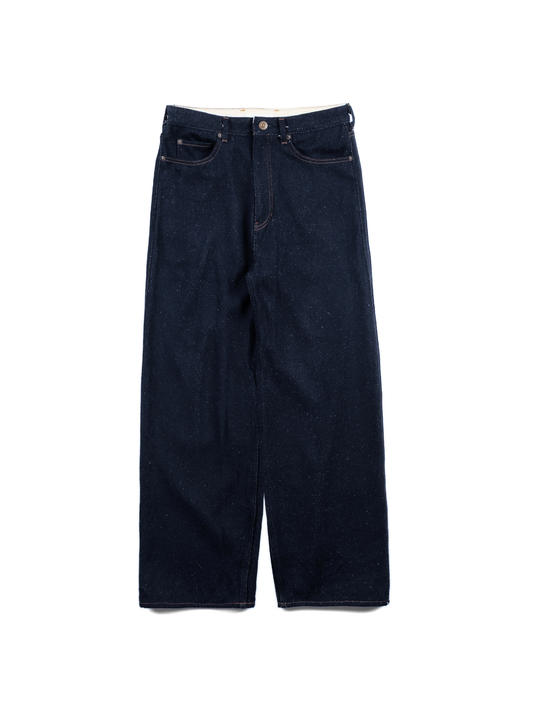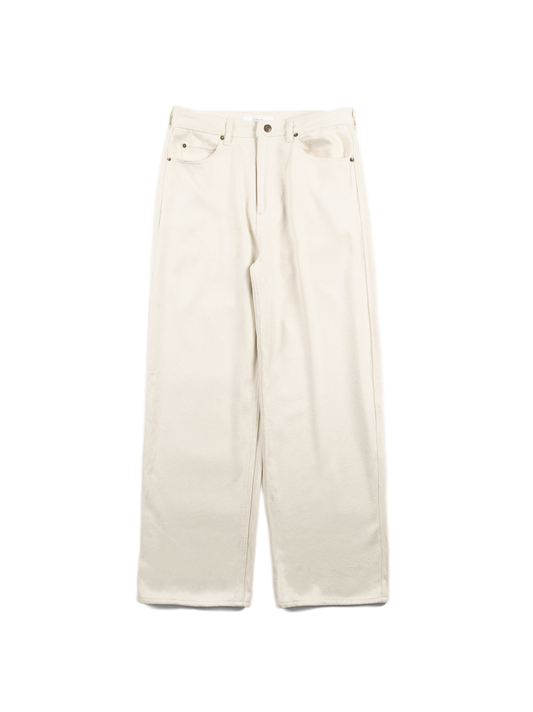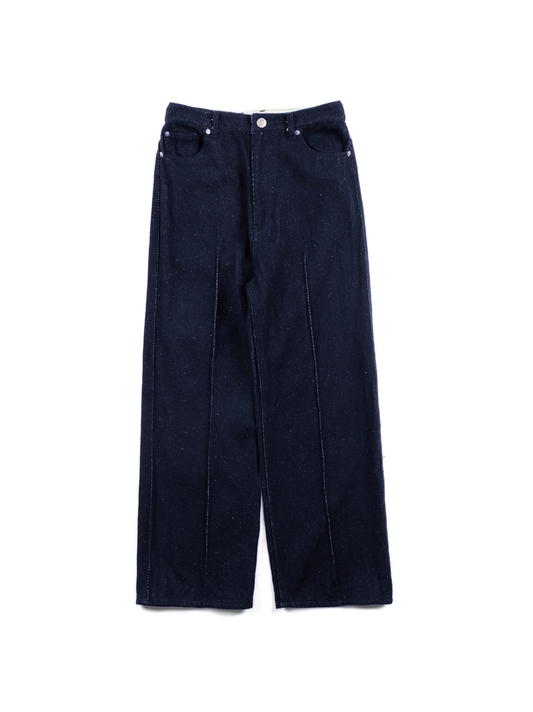JOURNAL.4 Silk Nep Denim Pants|尾州、岡山
Ichinomiya City, Aichi Prefecture.
This is a globally very rare fabric production area where extremely old looms called "shuttle looms," manufactured over half a century ago, are still in operation.
Cornier’s iconic silk nep denim for the autumn/winter season is also woven on such old looms.
A very luxurious and highly designed silk material using silk tsumugi yarn both vertically and horizontally.
 The unique texture created by weaving three-dimensionally with a wavy effect while preserving the fullness of the warp yarn is a texture that can only be produced by shuttle looms, which has fascinated many designers so far.
The unique texture created by weaving three-dimensionally with a wavy effect while preserving the fullness of the warp yarn is a texture that can only be produced by shuttle looms, which has fascinated many designers so far.

 In the Bishu production area centered around Ichinomiya City, traditional weaving factories using old-style looms are scattered.
In the Bishu production area centered around Ichinomiya City, traditional weaving factories using old-style looms are scattered.
The weaving factory that has handled fabrics for many top brands exudes a somewhat nostalgic atmosphere.

 Compared to modern new looms, the shuttle loom has only about one-tenth the production capacity.
Compared to modern new looms, the shuttle loom has only about one-tenth the production capacity.
The weft yarn is loaded onto the shuttle, and the warp yarn is repeatedly opened wide while weaving takes time.
The shuttle loom, symbolizing slow-made production, has gradually decreased in number along with the trend toward efficiency.

 The shuttle loom requires human hands for many steps in the weaving process, unlike modern new looms.
The shuttle loom requires human hands for many steps in the weaving process, unlike modern new looms.
Skilled craftsmen slowly weave while repeatedly making subtle adjustments based on their intuition and experience.
Denim fabric made in the Bishu production area is sewn in Okayama, the mecca of denim sewing, transforming into silk nep denim pants.

 Based on extensive experience sewing many denim pieces, they devise and experiment with each material and sewing specification to complete a single pair of denim pants.
Based on extensive experience sewing many denim pieces, they devise and experiment with each material and sewing specification to complete a single pair of denim pants.
The sewing of the highly difficult silk material is organized into optimal sewing processes by skilled technicians.

 Denim-specific sewing details such as chain stitching and rivets are carefully carried out by veteran craftsmen.
Denim-specific sewing details such as chain stitching and rivets are carefully carried out by veteran craftsmen.
 Denim pants made from silk tsumugi yarn produced across different production areas.
Denim pants made from silk tsumugi yarn produced across different production areas.
Behind the rich texture and unique items lies the inefficiency that requires human hands.
In the modern era where speed and efficiency are demanded, slow-made craftsmanship is disappearing year by year, and things that were once possible are gradually becoming impossible.
Items created by resisting the major trends, sometimes born from a highly personal intuition far from rationality, contain a mysterious charm that somehow holds a convincing appeal.




